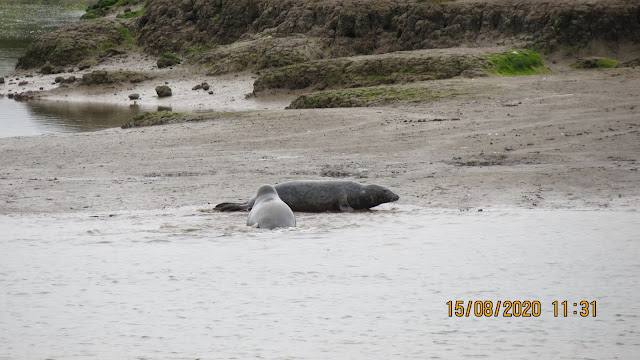Today’s species (and our first mammal) - the Grey Seal (Halichoerus grypus) - is one of two species of seal which can regularly be seen around the coasts of the UK and Ireland, the other being the Harbour (or Common) Seal. A third species, the Harp Seal, which normally lives in the Arctic, has been recorded in British waters occasionally as a vagrant.
The Grey Seal is found on both sides of the North Atlantic and is a fairly large seal, with males (known as bulls) in the UK populations reaching up to 2.3m (7ft 7in) in length and weighing up to 310kg. The females (you guessed it - cows) are much smaller, reaching no more than 1.95m (6ft 5in) and 190kg. Seals are, of course, marine creatures, but unlike those other marine mammals, the whales and dolphins, they haul ashore every day to rest over the low tide and at sunset. Haul-out sites are often on rocky shores, but can also be estuaries, tidal mud flats and sandy shores. These ones were photographed today at Greatham Creek, which runs into the Tees Estuary at the suitably named Seal Sands.
The main food of Grey Seals is fish (they are often accused of 'stealing' fish from fishermen's nets) but they will also eat cephalopods (squid and octopus) and sometimes even birds.
Grey Seal cows give birth on land (to pups, surprisingly, not calves) between September and December (with the peak in October), usually on uninhabited islands, caves and remote beaches. The pups grow very quickly, and it is only 30-35 days before they take to the sea and can feed themselves independently.
 |
| Grey Seals differ from Harbour Seals in their 'Roman Nose' (Harbours have more snub noses) |
 |
| A Grey Seal swimming up Greatham Creek from the sea |















Very informative. Thank you
ReplyDeleteThanks Michael. Glad you enjoyed it
Delete